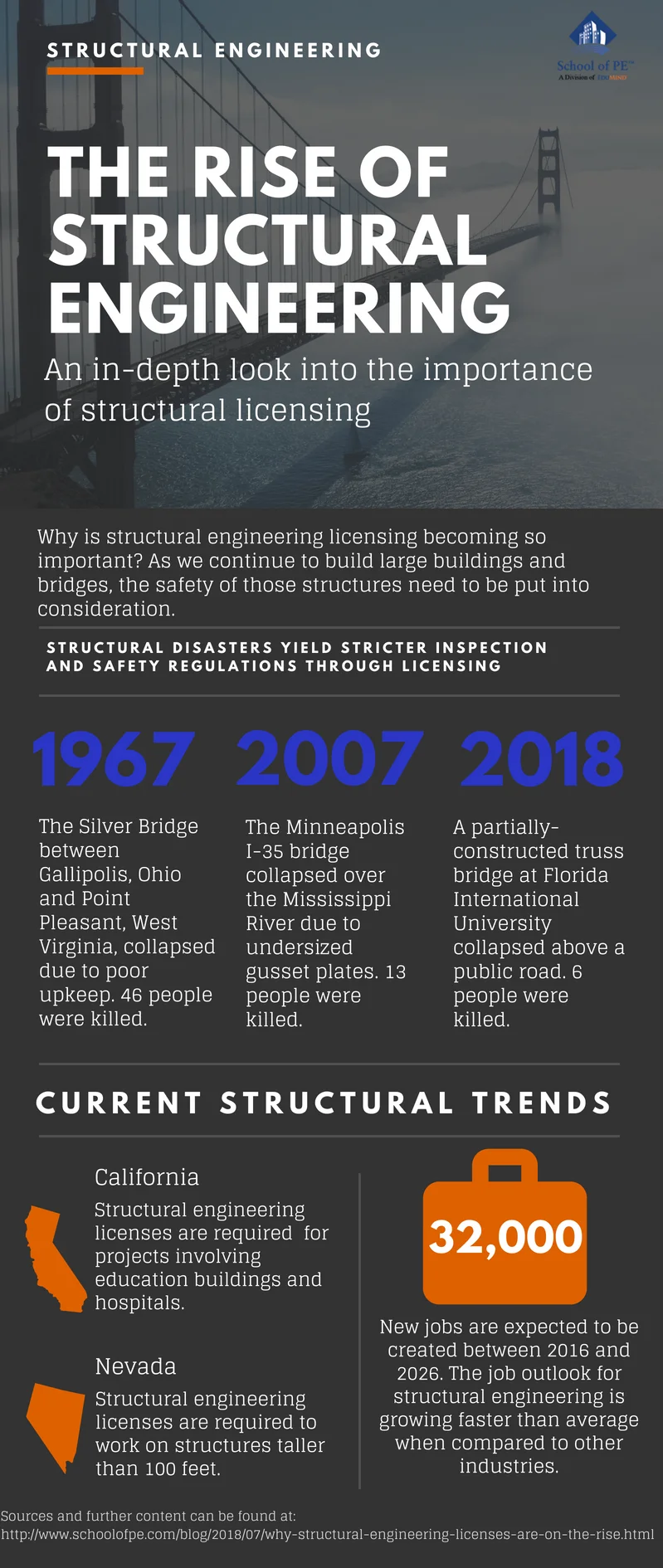Why Structural Engineering Licenses are on the Rise
Jul 13, 2018
As an engineering exam review course provider, we often get asked about structural engineering vs. civil engineering. It can be difficult to understand the differences between Structural Engineering (SE) and Professional Engineering (PE) Civil with the structural depth, but apart from the exam specifications and general licensing differences, the main differences primarily involve state board jurisdictions and career goals.
According to the National Council of Structural Engineers Association, the concept of structural engineering was derived from civil engineering as a whole. "Originally engineering was a military activity. As time passed, the benefit of engineering in non-military activities was recognized and engineering subsequently divided into two disciplines: Military Engineering and Civil Engineering. Soon other disciplines-Mechanical Engineering, Electrical Engineering, Structural Engineer, Chemical and Petroleum Engineering, and others-developed from Civil Engineering." i
The SE license from NCEES has become increasingly popular as state boards are beginning to require the license for certain structural engineering projects. Within the last decade, there has been a nationwide initiative to create safer and sturdier structures, which therefore encourages state boards to take action to require a structural engineering license before one can practice structural engineering. For instance, the I-35W bridge collapse in Minneapolis, Minnesota resulted in extra precautions and a reevaluation of design standards for future structural bridge projects.
California, Hawaii, Illinois, and Nevada are some states that specifically require engineers to have their SE license for certain projects. Hawaii and Illinois require a structural engineering license for any structural engineering jobs; California and Nevada have more specific regulations. In California, a SE license is required for educational buildings and hospitals, while an engineer with a PE license can practice structural engineering on any other structures. Nevada requires a SE license for structures that are taller than 100 feet and for buildings taller than 45 feet or three stories.ii As time progresses, the need for a structural engineering license seems to be getting greater with state engineering boards.
Those interested in structural engineering are encouraged to check with their state engineering boards for practicing regulations. For those that reside in a state that does require a structural engineering license, SE courses that include SE exam practice problems are a great way to prepare for the SE exam.
References
i National Council of Structural Engineers Association. A Day in the Life. Retrieved from
ii Structural Engineer (SE) Licensure Explained. Retrieved from
https://www.engineering. com/Library/ArticlesPage /tabid /85/ArticleID/1808/ Structural-Engineer SE-Licensure-Explained.aspx

Latest Blogs
Blogs by Year/ Month
Copied to clipboard



